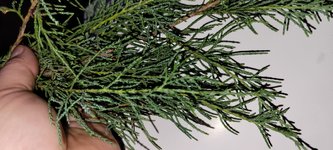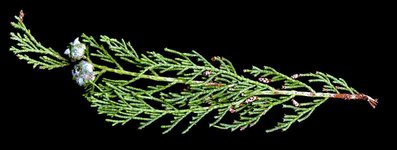Seen this on a mountain in North Idaho. I don't believe its native as I've never seen one before. Its also not the typical juniper you see in the landscape.
The foliage was almost weeping and looked really wispy. I wasn't able to photograph the whole tree.
I though it had cones until I got up close, I do believe they are galls.
It doesn't have what I wpuld consider a typical cedar or juniper scent when the foliage is crushed
The foliage was almost weeping and looked really wispy. I wasn't able to photograph the whole tree.
I though it had cones until I got up close, I do believe they are galls.
It doesn't have what I wpuld consider a typical cedar or juniper scent when the foliage is crushed






